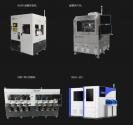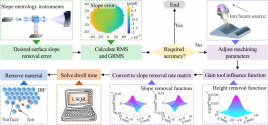Huaxin Intelligent, a domestic semiconductor advanced packaging equipment supplier, has completed tens of millions of yuan in A+ round financing this year
Recently, Huaxin Intelligent, a domestic wafer-level advanced packaging and testing equipment company, announced that it had received tens of millions of yuan in A+ round financing in 2024. Among them: Jinhaitong (stock code 603061), a listed company and a leading integrated circuit test and sorting machine company, invested tens of millions of yuan in industry, and Jiangyin Xiayin Investment invested tens of millions of yuan .
Shenzhen Huaxin Intelligent Equipment Co., Ltd. (hereinafter referred to as Huaxin Intelligent) was established in July 2021. It is a semiconductor wafer-level packaging equipment company integrating professional research and development, production and sales. Huaxin Intelligent 's independently developed wafer-level packaging, testing and sorting equipment has been replaced by domestic products since 2023. It is the first advanced packaging and testing equipment company in China to achieve mass production of wafer-level sorting machines . It has obtained mass production orders from several domestic industry leaders and has reached cooperation with many domestic and foreign leaders . After this round of financing, Huaxin Intelligent will set up a localized wafer-level sorting machine manufacturing base in East China and continue to deepen its presence in the East China market.
Huaxin Intelligent's main products are advanced packaging, testing, sorting and testing equipment. Advanced packaging, testing, sorting and testing equipment products include WLCSP special sorting equipment, Panel-level packaging, testing and patching equipment, Fanout packaging sorting equipment, SIC KGD equipment, Wafer AOI special equipment, etc.; semiconductor sorting and testing equipment is suitable for advanced packaging such as wafer-level packaging technology (WLCSP), system-level packaging technology (SIP), 2.5/3.0D integrated packaging, Fan-in and Fan-out, Chiplet packaging, etc.



